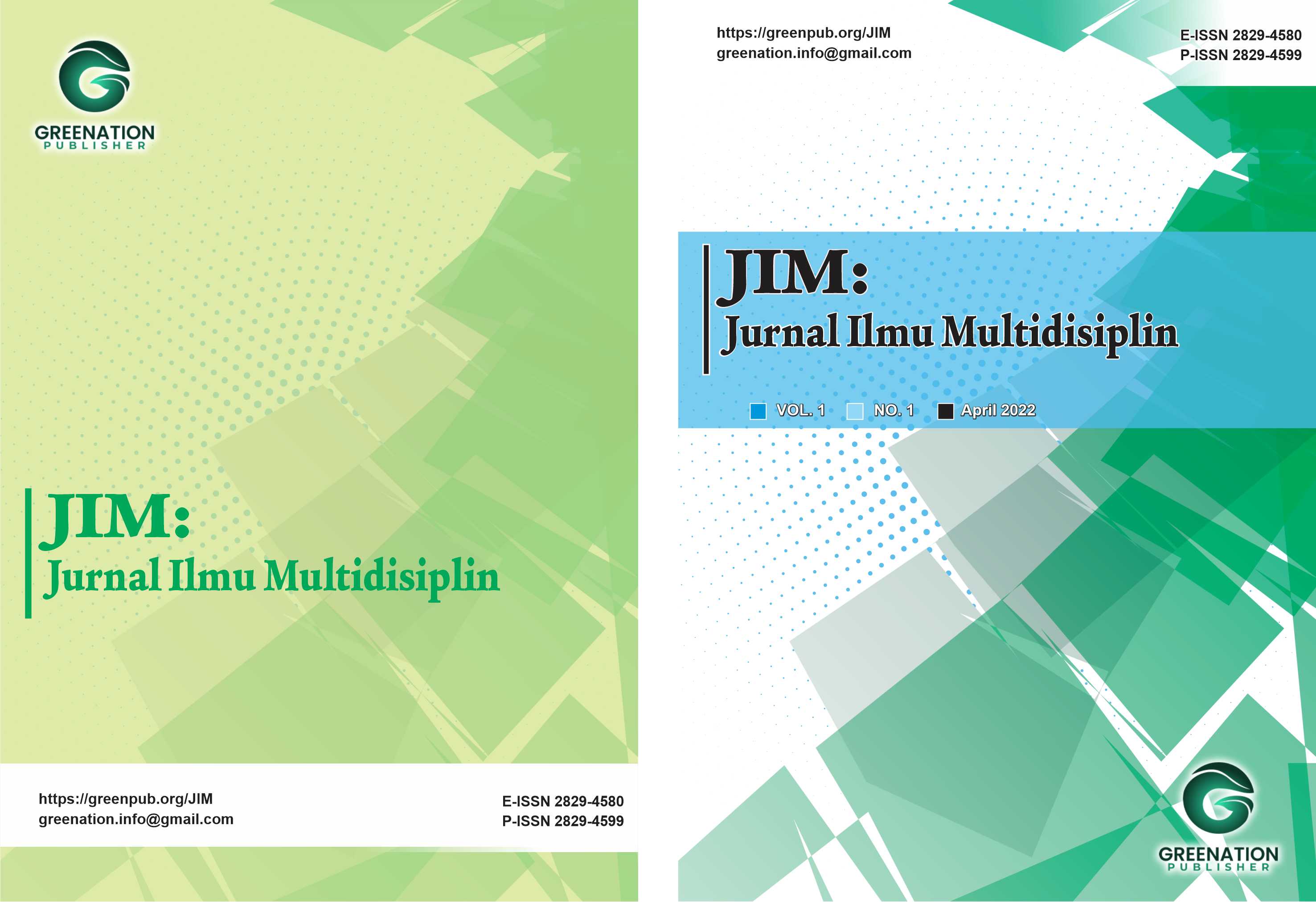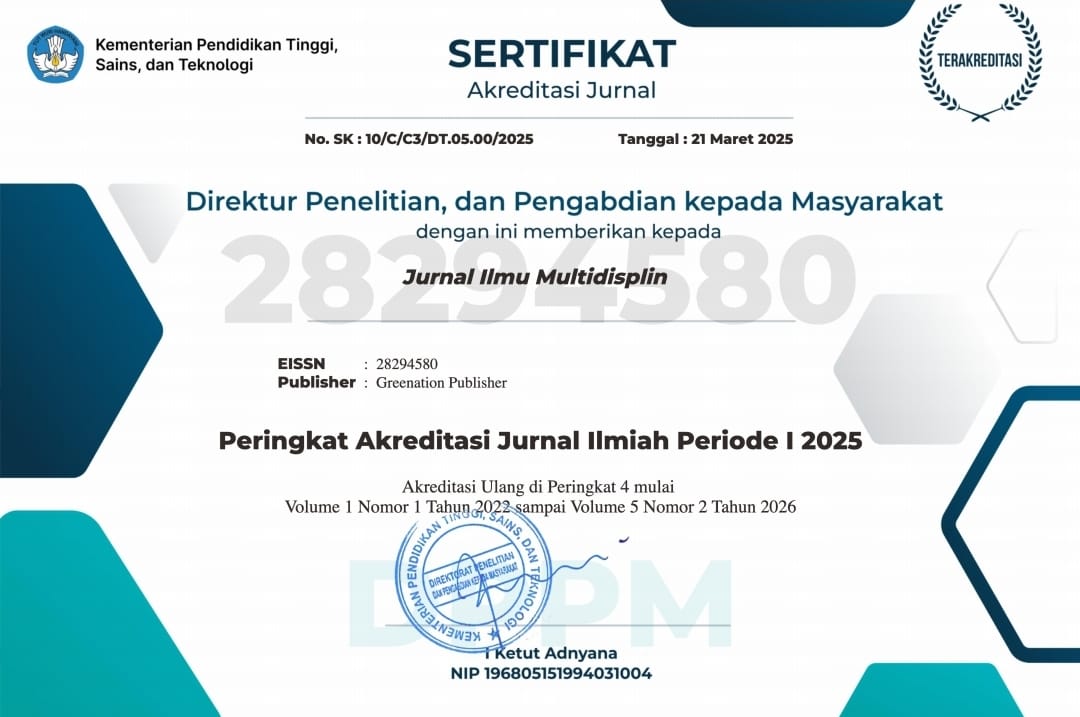Integrasi Preferensi Generasi Z dan Pendekatan Design Thinking dalam Perancangan Tiny House Sistem Kluster
DOI:
https://doi.org/10.38035/jim.v4i4.1250Keywords:
Desain hunian, Design Thinking, Generasi Z, sistem kluster, Tiny HouseAbstract
Tingginya laju urbanisasi dan keterbatasan lahan di kota-kota besar Indonesia menimbulkan kebutuhan akan hunian alternatif yang efisien dan adaptif, khususnya bagi Generasi Z sebagai kelompok usia produktif dominan saat ini. Penelitian ini bertujuan untuk merumuskan kriteria desain Tiny House sistem kluster yang sesuai dengan preferensi Generasi Z melalui pendekatan Design Thinking. Metode penelitian terdiri atas lima tahap: Empathize, Define, Ideate, Prototype, dan Test, yang menggabungkan pendekatan deskriptif kuantitatif dan eksploratif kualitatif. Sebanyak 55 responden Generasi Z berpartisipasi dalam survei awal untuk mengeksplorasi tujuh aspek preferensi desain, dilanjutkan dengan pengembangan prototipe visual dan uji persepsi ulang. Hasil penelitian menunjukkan delapan kriteria utama, antara lain efisiensi ruang, fleksibilitas fungsi, keberlanjutan, privasi, dan konektivitas sosial. Prototipe desain yang dikembangkan diterima dengan baik oleh 88,10% responden, yang menyatakan desain telah sesuai dengan preferensi mereka. Temuan ini menegaskan efektivitas Design Thinking sebagai pendekatan partisipatif dalam merancang hunian yang relevan, berkelanjutan, dan responsif terhadap kebutuhan generasi muda urban Indonesia.
References
Analisa, F. C. K., & Okada, S. (2023). Tiny House Characteristics in Indonesia Based on Millennial’s User Preference. Urban, Planning and Transport Research, 11(1). https://doi.org/10.1080/21650020.2023.2166095
Badan Pusat Statistik. (2025). Jumlah Penduduk Menurut Kelompok Umur dan Jenis Kelamin, 2025. Badan Pusat Statistik. https://www.bps.go.id/id/statistics-table/3/WVc0MGEyMXBkVFUxY25KeE9HdDZkbTQzWkVkb1p6MDkjMyMwMDAw/jumlah-penduduk-menurut-kelompok-umur-dan-jenis-kelamin--ribu-jiwa-.html?year=2025
Buhl, A., Schmidt-Keilich, M., Muster, V., Blazejewski, S., Schrader, U., Harrach, C., Schäfer, M., & Süßbauer, E. (2019). Design Thinking for Sustainability: Why and How Design Thinking Can Foster Sustainability-Oriented Innovation Development. Journal of Cleaner Production, 231, 1248–1257. https://doi.org/10.1016/j.jclepro.2019.05.259
IDN Research Institute. (2020). Indonesia millennial report x Gen Z. IDN Media.
Nurfadlilawati, I., & Kusuma, H. E. (2024). Housing Attribute Preferences in Bandung City: A Comparison Between Generation X, Y, Z. DIMENSI (Journal of Architecture and Built Environment), 51(1), 8–16. https://doi.org/10.9744/dimensi.51.1.8-16
Pande, M., & Bharathi, S. V. (2020). Theoretical Foundations of Design Thinking – A Constructivism Learning Approach to Design Thinking. Thinking Skills and Creativity, 36. https://doi.org/10.1016/j.tsc.2020.100637
Shearer, H., & Burton, P. (2021). Tiny houses: movement or moment? Housing Studies, 38(3), 360–382. https://doi.org/10.1080/02673037.2021.1884203
VandenBrink, D. (2019). Smaller Homes, Bigger Community: Cluster Housing as a Suburban Redevelopment Strategy in Ottawa.
Willoughby, C., Mangold, S., & Zschau, T. (2020). Small Houses, Big Community: Tiny Housers’ Desire for More Cohesive and Collaborative Communities. Social Sciences, 9(2). https://doi.org/10.3390/socsci9020016
Downloads
Published
How to Cite
Issue
Section
License
Copyright (c) 2025 Almira Tara Mahsa, Firman Hawari

This work is licensed under a Creative Commons Attribution 4.0 International License.
You are free to:
- Share— copy and redistribute the material in any medium or format
- Adapt— remix, transform, and build upon the material for any purpose, even commercially.
The licensor cannot revoke these freedoms as long as you follow the license terms.
Under the following terms:
- Attribution— You must give appropriate credit, provide a link to the license, and indicate if changes were made. You may do so in any reasonable manner, but not in any way that suggests the licensor endorses you or your use.
- No additional restrictions— You may not apply legal terms or technological measures that legally restrict others from doing anything the license permits.
Notices:
- You do not have to comply with the license for elements of the material in the public domain or where your use is permitted by an applicable exception or limitation.
- No warranties are given. The license may not give you all of the permissions necessary for your intended use. For example, other rights such as publicity, privacy, or moral rightsmay limit how you use the material.




























